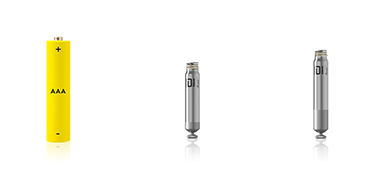The FDA has approved Abbott’s AVEIR dual chamber (DR) leadless pacemaker system, the first dual chamber leadless pacing system that treats people with abnormal or slow heart rhythms. Roughly one-tenth the size of a traditional pacemaker, the AVEIR DR leadless pacing system is made up of two devices: the previously approved AVEIR VR single chamber device, which paces the right ventricle, and the now-approved AVEIR AR single chamber device, which paces the right atrium.
The AVEIR DR system incorporates Abbott’s novel i2i technology, which provides synchronized or coordinated cardiac pacing between two leadless pacemakers based on the person’s clinical needs. The i2i technology utilizes high-frequency pulses to relay messages via the naturally conductive characteristics of the body’s blood between each leadless pacemaker. To support dual chamber therapy, each implant communicates beat-to-beat with a paired, co-implanted device.
The FDA approval of the AVEIR DR dual chamber leadless pacemaker system comes on the heels of recent late-breaking clinical data published in The New England Journal of Medicine showing that AVEIR DR system met its three prespecified primary endpoints for safety and efficacy. Results from the AVEIR DR i2i Investigational Device Exemption (IDE) study through three-months post-implant showed a 98.3% implant success rate for physicians and more than 97% of people had a successful atrio-ventricular synchrony, so that the upper and lower chamber were beating normally, despite different types of underlying slow heart rhythms.
“Modern medicine has been filled with technological achievements that fundamentally changed how doctors approach patient care, and now we can officially add dual chamber leadless pacing to that list of achievements,” said Vivek Y. Reddy, M.D., director of cardiac arrhythmia services for the Mount Sinai Hospital and the Mount Sinai Health System. “In delivering a true dual chamber leadless pacemaker system, Abbott is expanding access to the benefits of leadless pacing to far more people than ever before and provided additional options to improve our ability to treat people with slow or abnormal heart rhythms.”

The devices, which are shorter, smaller and slimmer than a AAA battery, attach to the heart’s interior surface with a screw-in mechanism—known as a helix—that allows for future retrieval of the device should therapy needs evolve, or if the device needs to be replaced in the future. The AVEIR DR system is also designed to provide real-time pacing analysis, so physicians can assess proper placement of the device during the procedure and before implanting the device to the inside of the heart chamber.





